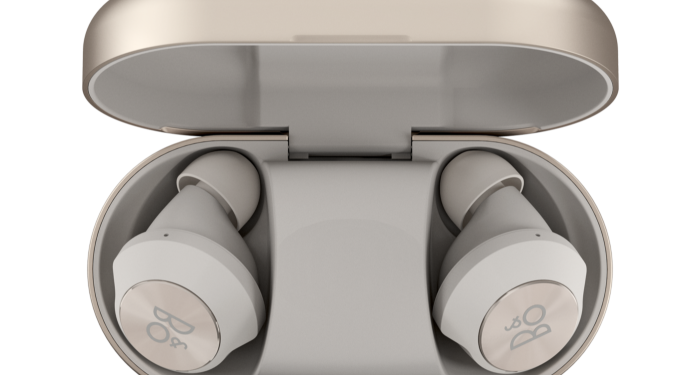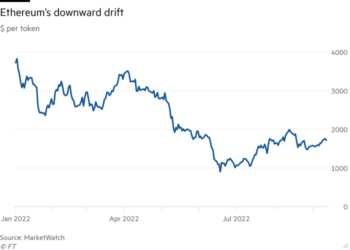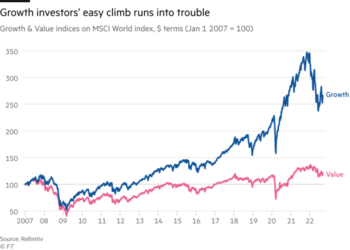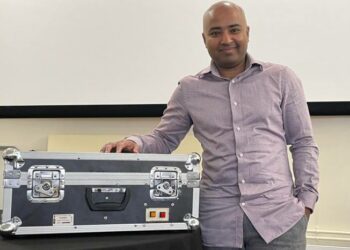The year is 2035. Del Spooner, a US detective, sits behind the wheel of an Audi self-driving vehicle while the muscly silver car races through Chicago’s underground passages.
The science-fiction blockbuster hit I, Robot predicted that autonomous vehicle deployment was three decades away when it hit the cinema screens in 2004. But the intervening years have seen $330bn pumped into the industry, according to McKinsey research, bringing that fiction closer to reality.
Alphabet-backed Waymo opened a fully autonomous service to the public in late 2020 in the suburbs of Phoenix, Arizona. On Monday, it announced that it was ready to remove safety drivers from its autonomous vehicles in the more challenging driving conditions of San Francisco’s hilly streets.
Waymo and GM-backed Cruise are leading the pack in the US, having racked up the most miles driven and snapped up prized licenses that enable it to operate in fully autonomous mode without a safety driver.
Much of their success lies in the technological and engineering expertise in Silicon Valley. “The US high-tech industry led a lot of the initial push in autonomous tech, creating the sensors, chips, cameras that go into the vehicles,” said Jeremy Carlson, an autonomous driving analyst at the market research firm IHS market.
One industry insider said the relaxed rules in US states including California and Nevada, which was the first to allow driverless cars on its roads in 2011, has also played an important role in propelling the growth of domestic players.
“In the US, [when testing driverless cars] you can pretty much do whatever you want if it’s now explicitly prohibited,” they said. “This is not how things work in Europe, where companies have to get explicit permission at every stage of deployment.”
The same relaxed regulatory approach is also galvanising the growth of Chinese rivals, with competitors such as Baidu’s Apollo expanding its network of driverless cars across the country.
Wei Dong, vice-president and chief security operation officer at Baidu’s Intelligent Driving Group, said the government had given the industry “a relatively loose environment to experiment” and grow. The company has eight Robotaxi schemes in big Chinese cities, including Shanghai, Beijing and Shenzhen, where passengers hail a taxi with a safety driver inside that can take over if there are any problems on the road.
Chinese companies have also been quick to deploy their cars in California, considered the global gold standard for AV testing. Three Chinese companies — PonyAi, Didi and AutoX — were among the top ten companies when charting miles driven in autonomous mode on Californian roads last year. European players were notably absent from the list, analysts say, because they are hobbled by stricter regulation governing the testing and deploying of automotive technology.
China’s autonomous vehicle companies are hot on the (w)heels of American counterparts, but they are still reliant on technology imported from the other side of the Pacific. “China has made huge strides integrating US technology in their ecosystems,” said Carlson, notably using US chipmaker Nvidia’s advanced artificial intelligence chips to collect and analyse data about the car’s environment.
It no longer seems far-fetched that Will Smith’s character Del Spooner is riding around town in a self-driving metal box in 2035. The key question is whether his car will be a product of European — or more likely of Chinese or American invention.
The Internet of (Four) Things
1. Alibaba bid to boost investor confidence
Alibaba has increased its share buyback plan to $25bn as the Chinese ecommerce group looks to boost its stock price. This announcement on Tuesday comes after the ecommerce group has lost about 65 per cent of its value since Chinese authorities cancelled the initial public offering of its fintech arm Ant Group in November 2020.
2. Big Tech told to crack down on Russian propaganda
Western lawmakers have demanded that social media platforms Facebook and Twitter put limits on Russian state accounts, including the dozens of embassies, government ministries and political leaders that are part of the Kremlin propaganda machine. The accounts have been pushing false narratives, including that victims of the Mariupol bombing were not civilians, Ukraine is undergoing a “Nazification” and that the country is planning to launch a biochemical attack.
3. Facebook failed to stop hate speech in Myanmar
Human rights group Global Witness published a report that Facebook failed to detect hate speech directed at Myanmar’s Rohingya Muslim minority, reports the Associated Press. The non-profit group submitted eight paid adverts that included hate speech against the minority group, all of which were approved by Facebook. The ads were pulled before publication, but the group argues it highlights the platform’s persistent weakness in detecting hate speech, despite promises to improve.
4. BuzzFeed is not so buzzing
BuzzFeed’s editor-in-chief Mark Schoofsstepped down after the company reported revenue over 20 per cent lower than the figure it pitched to investors last year. BuzzFeed fell short of its goal of making $521mn in 2021, with revenues coming in at $398mn.
Tech tools
Fergus Scholes of How to Spend It reviews seven of the best sports headphones in the market that cater for sweaty gym-goers, swimmers and runners wanting to stay tuned into their surroundings while listening to motivational bangers. Scholes’ top pick for sound quality are the Bang & Olufsen Beoplay EQ wireless earphones. These £359 creations offer up to 20 hours of total playtime (6.5 hours with the noise-cancelling feature), along with good sweat- and water-resistance and ease-of-use on the move. He writes that the earphones, made from hard anodised aluminium have an “impeccable” aesthetic and sound.











